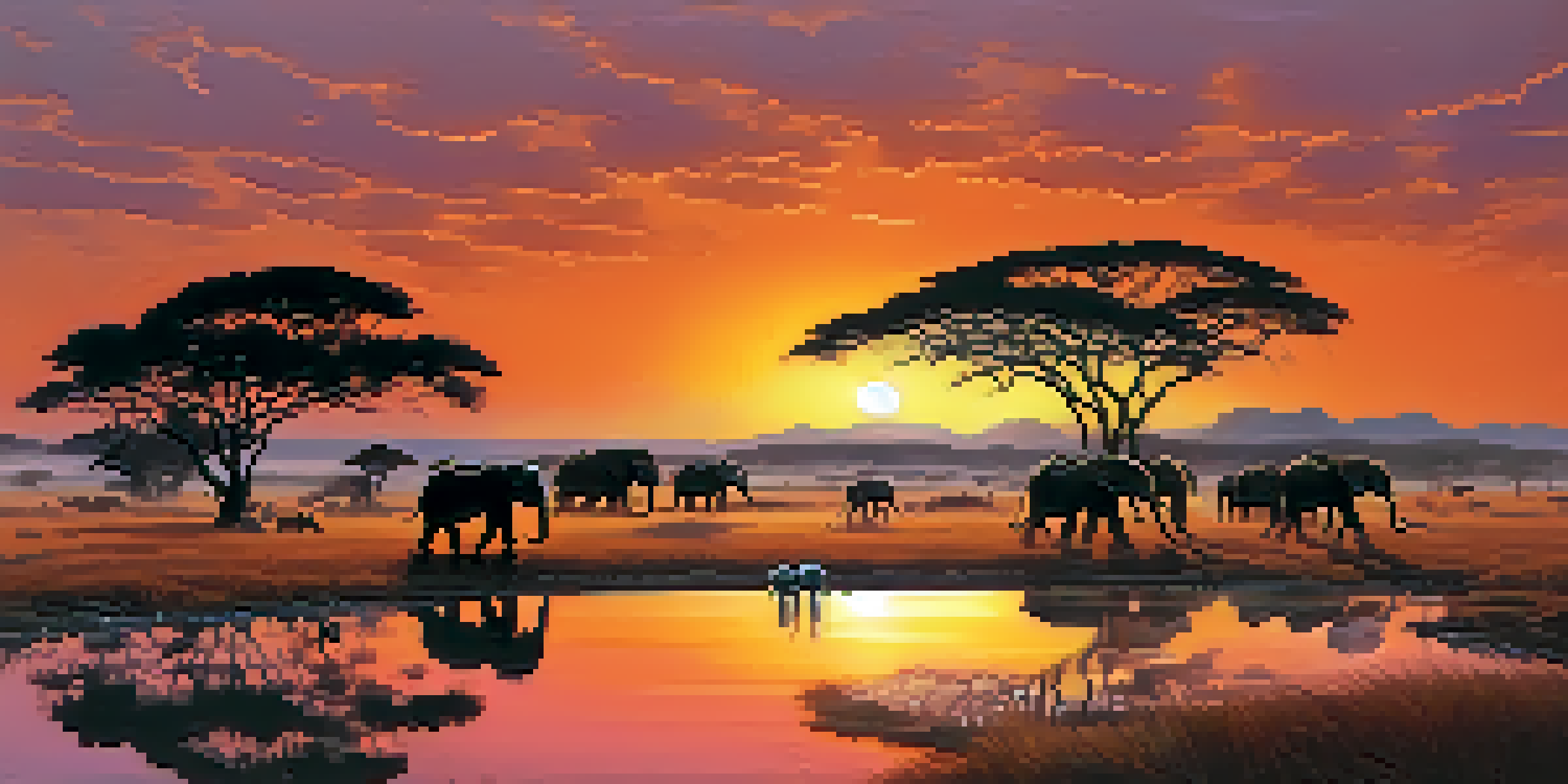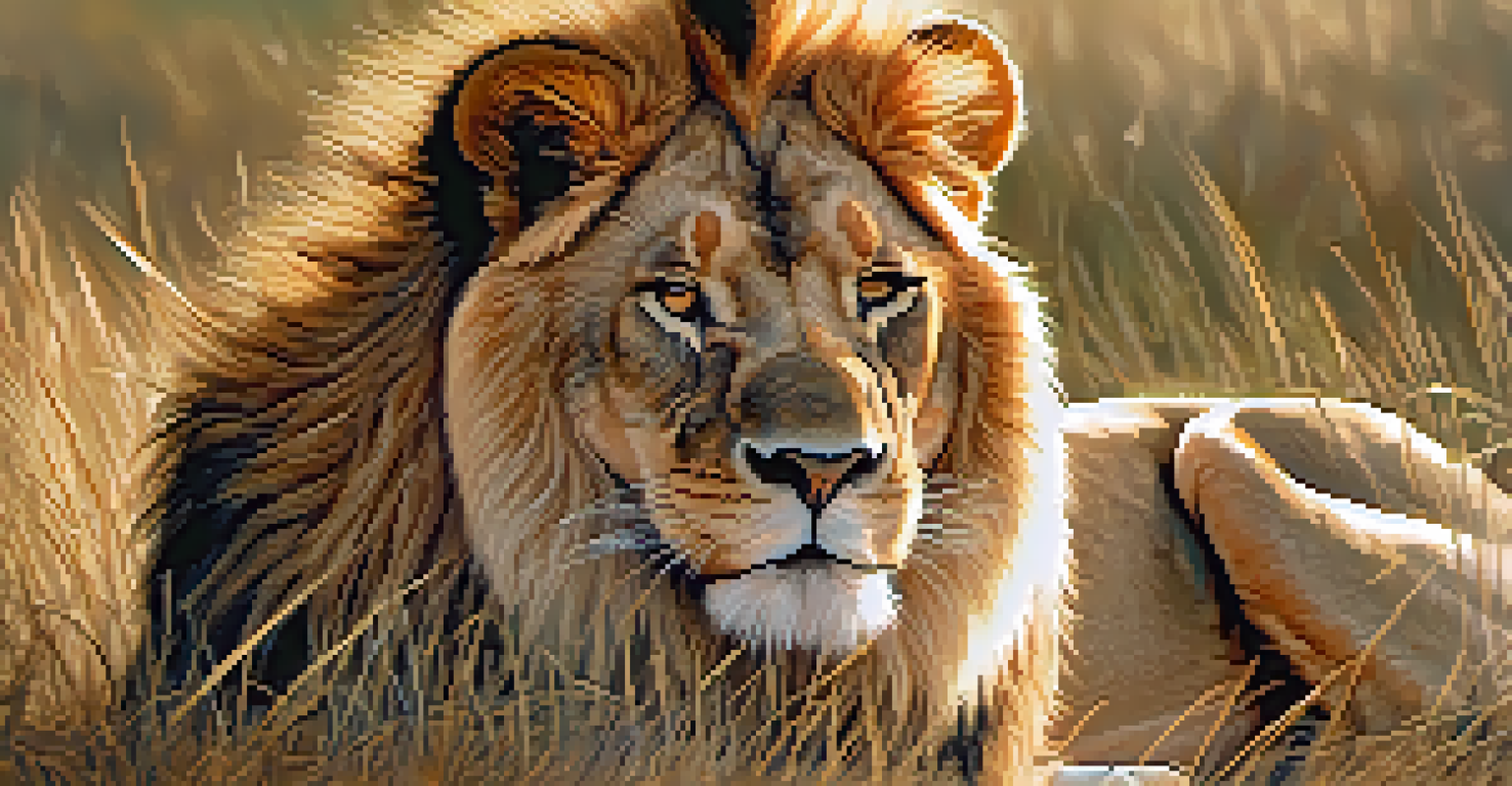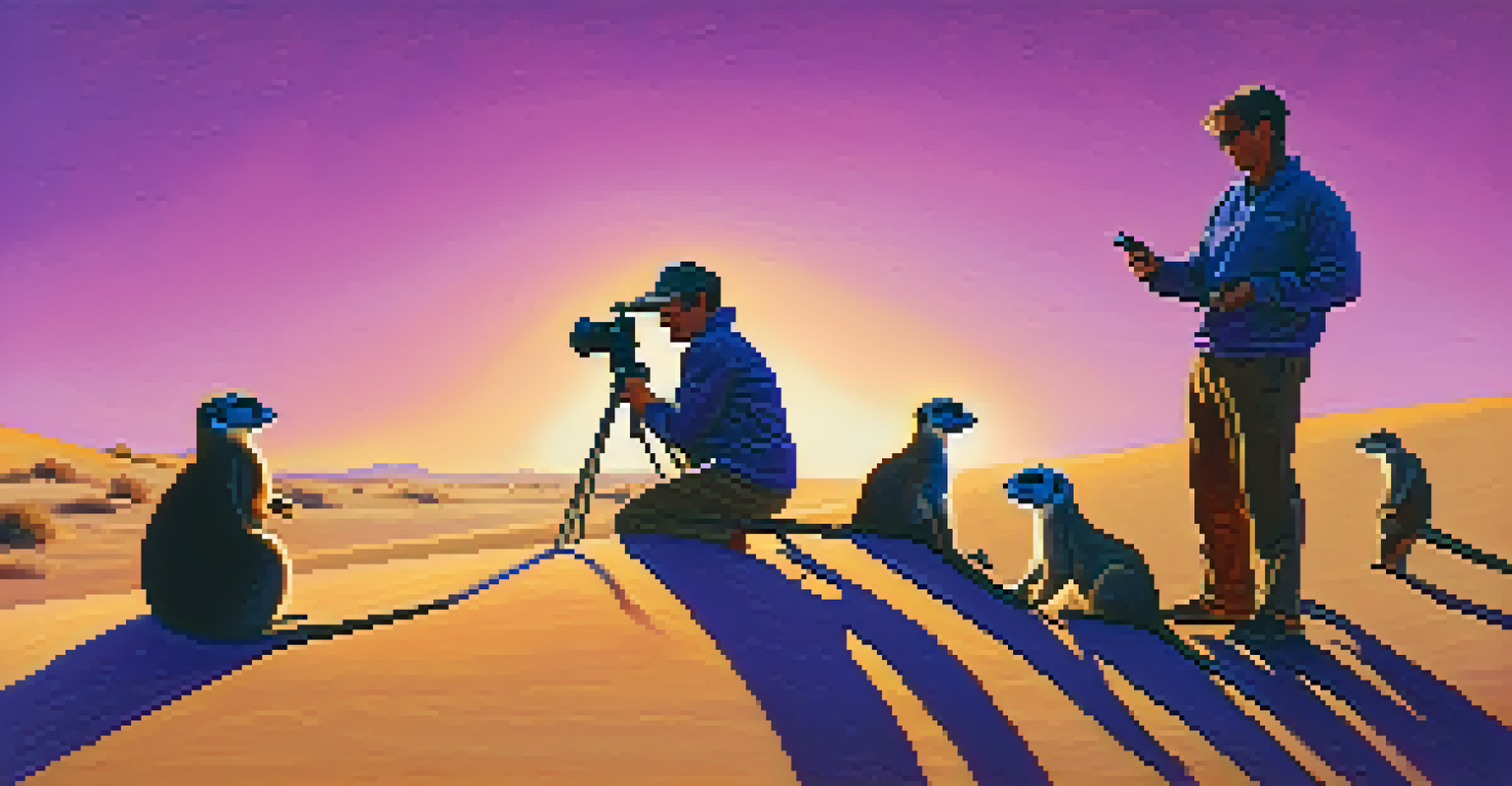Wildlife Photography on Eco-Conscious Safaris

Understanding Eco-Conscious Safaris
Eco-conscious safaris focus on minimizing environmental impact while providing unforgettable wildlife experiences. These tours prioritize sustainability, ensuring that the habitats and species observed remain protected for future generations. By choosing eco-friendly options, travelers can enjoy nature without contributing to its degradation.
In every walk with nature one receives far more than he seeks.
Participants on eco-conscious safaris are often introduced to conservation efforts, learning how their travel choices can positively influence local ecosystems. This educational aspect fosters a deeper connection to nature and the wildlife being photographed. It's about more than just capturing images; it's about understanding the delicate balance of ecosystems.
Ultimately, eco-conscious safaris offer a chance for travelers to engage with wildlife photography in a meaningful way, supporting both their passion and the environment. Whether you're an amateur or a seasoned photographer, these experiences can enrich your portfolio and deepen your appreciation for nature.
Choosing the Right Safari Operator
Selecting a safari operator committed to sustainability is crucial for eco-conscious wildlife photography. Research operators that prioritize conservation and have transparent practices regarding wildlife interactions. Look for certifications or affiliations with recognized environmental organizations, which can be indicators of their commitment to eco-friendly tourism.

Additionally, consider reading reviews or testimonials from previous travelers. This feedback can provide insight into how the company operates and whether they genuinely uphold eco-conscious values. A reputable operator will also be happy to share their sustainability initiatives and how they contribute to local communities.
Eco-Safaris Promote Conservation
Eco-conscious safaris prioritize sustainability and educate travelers about conservation efforts, fostering a deeper connection to nature.
Engaging with operators that emphasize responsible wildlife photography can help ensure that your experience is both rewarding and respectful to the animals. This partnership not only enhances your own journey but also supports broader conservation efforts.
Essential Gear for Wildlife Photography
Packing the right equipment is essential for capturing stunning wildlife images. A good camera with a versatile zoom lens allows you to take close-up shots from a safe distance, preserving the animals' natural behavior. Many photographers also recommend bringing a tripod for stability, especially in low-light conditions during early mornings or late afternoons.
The greatest threat to our planet is the belief that someone else will save it.
In addition to your camera gear, don't forget about the importance of protecting your equipment. Weather-resistant bags and lens covers can be lifesavers in unpredictable climates. Moreover, consider investing in a sturdy pair of binoculars; they can enhance your experience by allowing you to spot wildlife before capturing them on camera.
Lastly, remember to pack extra batteries and memory cards. Wildlife photography often requires patience, and you don’t want to miss an incredible moment because your battery died or your card was full. Being prepared ensures you can focus on the beauty of nature around you.
Best Practices for Wildlife Photography
When photographing wildlife, ethical practices are paramount. Always prioritize the well-being of the animals and their habitats. Maintain a respectful distance and avoid disturbing them to capture authentic moments that reflect their natural behavior. Remember, the goal is to observe and appreciate, not intrude.
Timing is also key in wildlife photography. Early mornings and late afternoons often provide the best lighting and opportunities to see animals in their most active states. Be patient and remain quiet; sometimes, the best shots come when you least expect them.
Choose Sustainable Operators
Selecting safari operators with a commitment to eco-friendly practices ensures a responsible and rewarding wildlife photography experience.
Additionally, consider the composition of your photographs. Using the rule of thirds can help create balanced and engaging images. Experiment with angles and perspectives, but always keep the safety of both yourself and the wildlife in mind.
The Importance of Conservation Education
Participating in eco-conscious safaris often comes with opportunities to learn about conservation efforts. Many operators offer workshops or guided talks where you can gain insights into local wildlife protection initiatives. This education is crucial, as it arms travelers with knowledge to advocate for wildlife conservation beyond the safari experience.
Understanding the challenges faced by wildlife—such as habitat loss, poaching, and climate change—can inspire photographers to use their skills for advocacy. Sharing your stunning images on social media or with communities can raise awareness and encourage others to support conservation efforts.
Moreover, connecting with local conservationists during your safari can provide a deeper understanding of the ecosystem you’re photographing. These connections can transform your photography into a tool for change, making your experience not just about capturing images, but also about making a positive impact.
Post-Safari: Sharing Your Photography
After your safari, sharing your wildlife photographs can help raise awareness about conservation and the beauty of nature. Consider creating an online gallery or social media album to showcase your work. Engaging storytelling alongside your images can captivate your audience and inspire others to appreciate wildlife.
Participating in photography contests or exhibitions focused on wildlife can also amplify your voice. Many organizations value submissions that highlight conservation themes, so your work could contribute to important dialogues about environmental issues.
Photography Can Drive Change
Sharing wildlife photographs can raise awareness about conservation issues and inspire others to support environmental initiatives.
Additionally, consider donating a portion of any profits from your photography to wildlife conservation organizations. This not only supports the cause but also reinforces the idea that photography can serve a larger purpose beyond personal achievement.
The Future of Eco-Conscious Wildlife Photography
As the demand for eco-conscious travel grows, so does the potential for wildlife photography to play a pivotal role in conservation. Photographers have a unique opportunity to influence how people perceive wildlife and the environments they inhabit. By capturing stunning images, they can spark interest and inspire action among a broader audience.
Moreover, advancements in technology, such as drones and improved camera equipment, are changing the landscape of wildlife photography. These tools can provide new perspectives while still adhering to ethical guidelines, allowing for creative storytelling that highlights conservation efforts.

Looking ahead, the collaboration between photographers, conservationists, and travelers will be essential in promoting sustainable practices. Together, they can foster a greater appreciation for the natural world and drive meaningful change towards preserving wildlife.